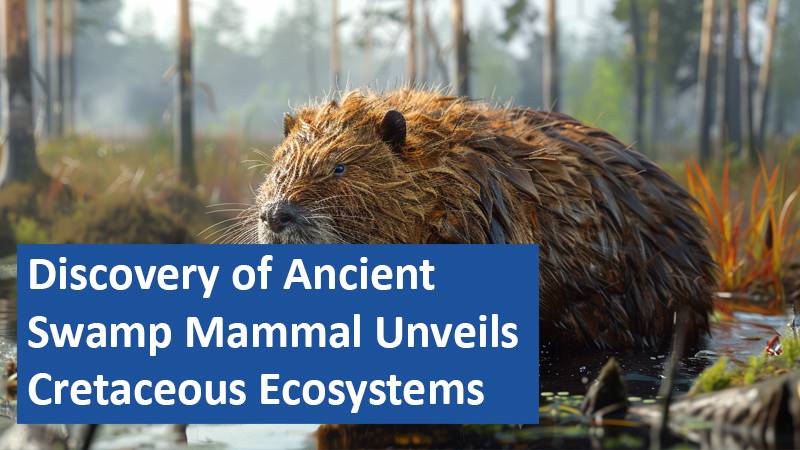Paleontologists have discovered fossils of Heleocola piceanus, a swamp-dwelling mammal that lived around 75 million years ago in what is now Colorado. This unique find reveals a large mammal for its time, shedding light on mammalian evolution during the Late Cretaceous. The study also provides insight into the rich ecosystems of North America during the age of dinosaurs.
By August Roberts
A Glimpse Into the Cretaceous Era

The discovery of Heleocola piceanus offers a window into North America’s prehistoric landscapes. During the Late Cretaceous, much of western Colorado was part of the vast Western Interior Seaway, which divided North America into two landmasses. The region where the fossils were found, near Rangely, likely resembled Louisiana’s wetlands, filled with deltas, marshes, and swamps. This environment supported diverse species, from turtles and crocodiles to dinosaurs and small mammals, thriving in a lush, water-rich habitat.
A Surprisingly Large Mammal for Its Time
Most mammals during the Cretaceous period were about the size of modern mice, yet Heleocola piceanus broke this mold by reaching a weight of approximately 2 pounds, similar to a muskrat. This size marks it as one of the larger mammals of its era, adapted to its swampy habitat. John Foster, a paleontologist at the Utah Field House of Natural History, expressed astonishment at the size of its jawbone, indicating its adaptation to its environment. This adaptation likely allowed Heleocola to thrive within the rich resources of its wetland home.
Clues About Diet and Habitat
The teeth of Heleocola provide vital information about its diet and lifestyle. Researchers suggest that the animal primarily consumed plants, possibly supplemented by small insects or vertebrates. The structure of its teeth indicates a diet suited for its swamp habitat, showing adaptability to the varied resources in its environment. This discovery highlights the resourcefulness of early mammals, capable of flexible dietary habits to survive in complex ecosystems.
Rethinking Mammalian Evolution in the Dinosaur Era
The existence of Heleocola piceanus challenges assumptions that Cretaceous mammals were mostly small and ecologically limited. Instead, this find suggests that some mammals were larger and more adaptable before the dinosaurs’ extinction. By occupying complex habitats and growing to significant sizes, mammals like Heleocola show that mammals were already evolving diverse ecological roles before the end of the dinosaur era.
The fossil find of Heleocola piceanus adds a crucial piece to the puzzle of mammalian history, enriching our understanding of their evolution during the age of dinosaurs.
Based on information from www.dailygalaxy.com and own research.